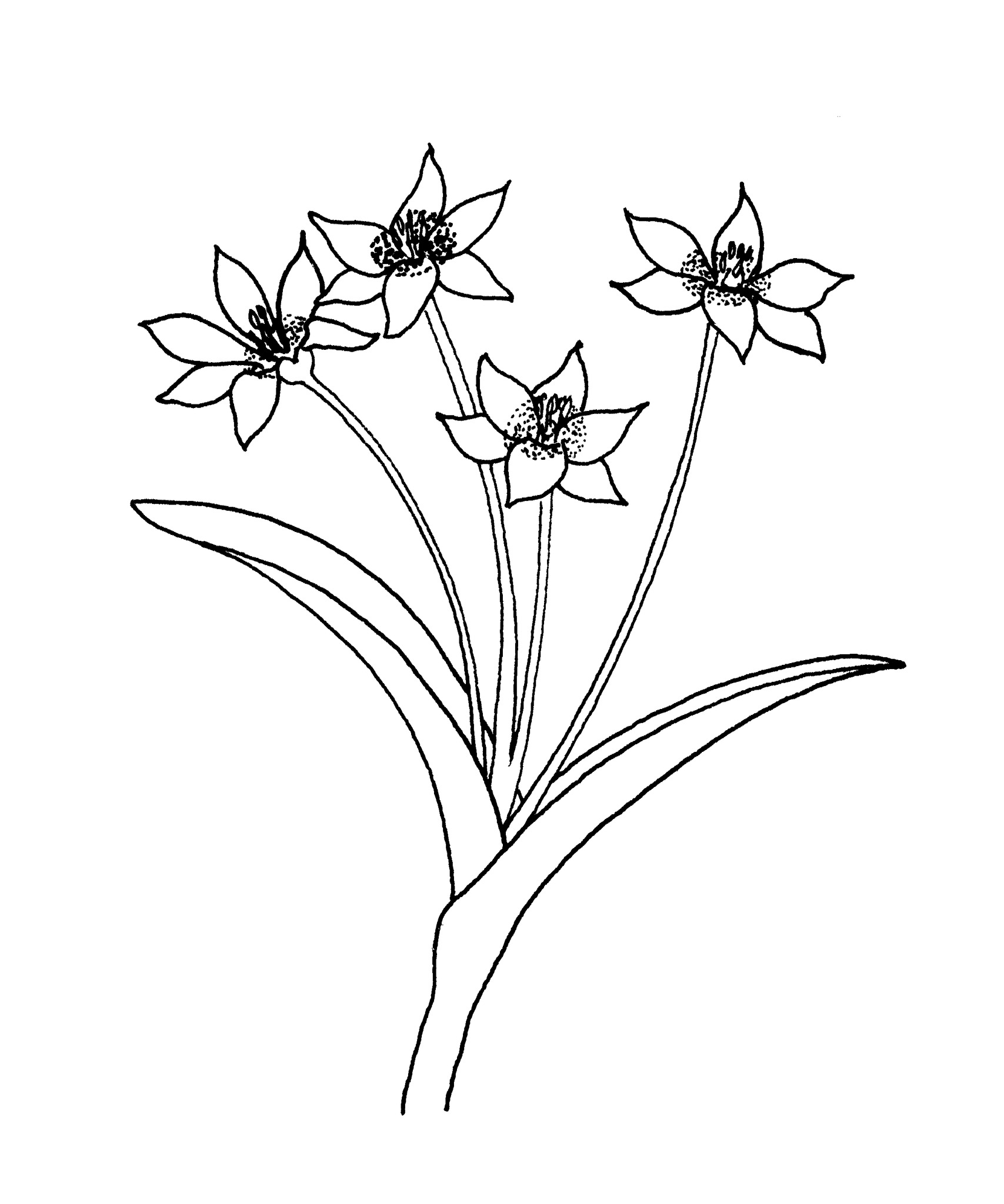
Greek tri – three, kyrtos – convex or bulging, referring to the prominent tepal nectaries.
Perennial herbs with tunicate bulbs. Leaves few, cauline, ovate to linear, sheathing, alternate. Flowers radially symmetrical, star- to bell-shaped, stalked, erect to nodding. Inflorescence 1 to few flowered terminal raceme, bracts leafy. Tepals 3+3, free, nectaries absent, but a coloured basal blotch often present. Stamens 6, free; anthers non-versatile. Ovary superior, ovoid, style more or less absent, stigma 3- lobed. Fruit a capsule. Seeds many, brown, flat.
Grown for the attractive flowers, mostly as cultivars in cool climate gardens, and as bedding and pot plants. An important bulb in the commercial Northern Hemisphere market and grown as an exhibition flower with multicoloured and frilled petals not so popular in Australia. The species are found mostly in specialist collections.
About 100 species from temperate Europe and Asia.
Tunicate bulbs; stem leaves; large flowers; lack of nectaries; non-versatile anthers.
Botschantseva (1982), Arnold (1992). Cultivars: lists published by the Royal General Bulbgrowers Association (1996). Periodical: Daffodil and Tulip Yearbooks, RHS.
Source: (2005). Liliaceae. In: . Horticultural Flora of South-eastern Australia. Volume 5. Flowering plants. Monocotyledons. The identification of garden and cultivated plants. University of New South Wales Press.
